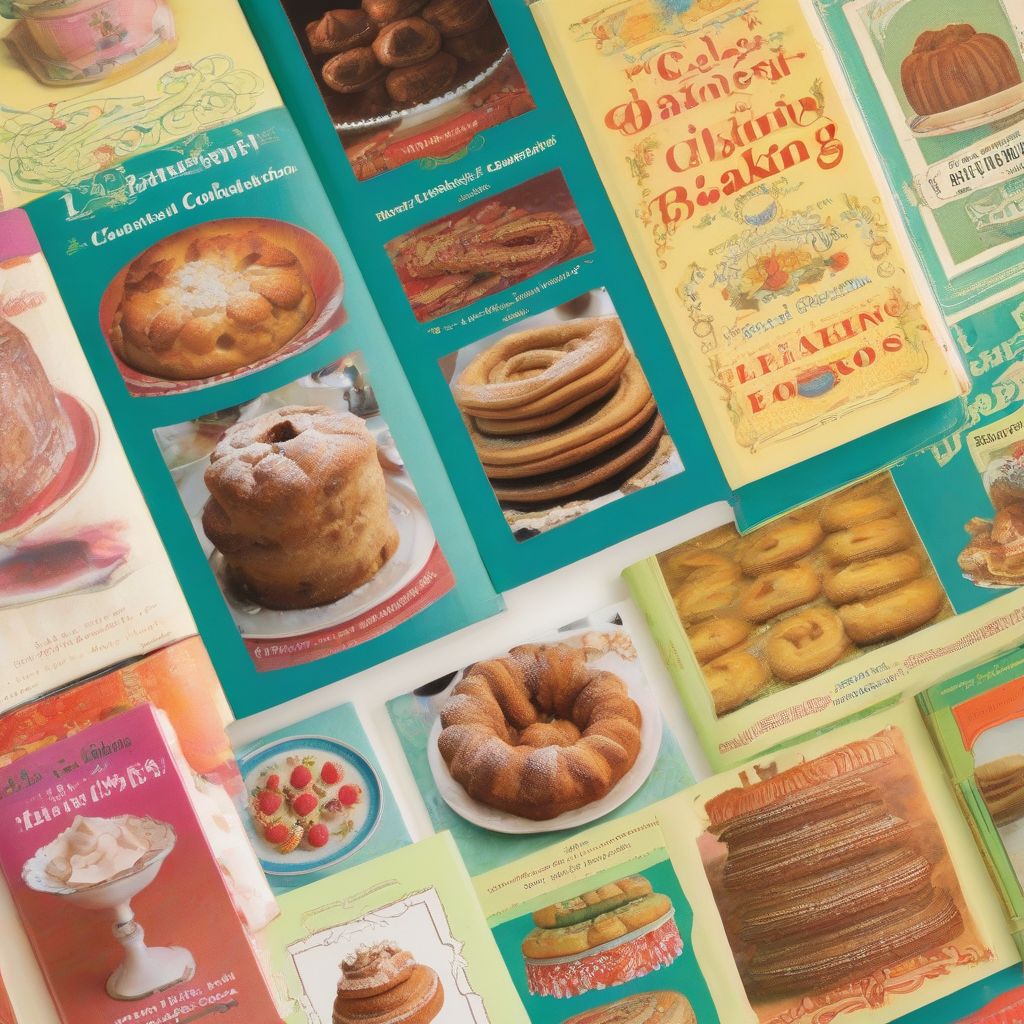Have you ever craved a taste of something exotic, like a delicate French macaron or a rich Argentinian alfajor? Baking international treats can transport you to another culture without leaving your kitchen. But finding and adapting recipes from around the globe can feel a bit like navigating a foreign land itself. Fear not, fellow baking enthusiast! With a dash of research, a pinch of understanding, and a whole lot of culinary curiosity, you can conquer any international baking recipe. Let’s embark on this delicious journey together!
Unveiling the World of International Baking Recipes
Where to Discover Authentic Recipes
Finding authentic recipes is the first step towards recreating international baked goods. Here are a few treasure troves waiting to be explored:
- Dive into International Cookbooks: Your local library or bookstore is a gateway to a world of flavors. Look for cookbooks dedicated to specific countries or regions.
- Explore Reputable Food Blogs: Many passionate food bloggers share their cultural heritage through recipes. Look for blogs with a strong focus on authenticity and detailed instructions.
- Connect with Global Food Communities: Online forums and social media groups dedicated to specific cuisines can provide a wealth of recipes and insider tips. Don’t hesitate to ask questions and learn from experienced bakers.
 International Baking Cookbooks
International Baking Cookbooks
[amazon bestseller=”international baking”]
Understanding the Nuances of International Ingredients
Often, the key to an authentic flavor lies in using traditional ingredients. Don’t be intimidated by unfamiliar names!
- Researching Ingredient Substitutions: Many international ingredients have readily available substitutes. For example, if a recipe calls for ghee (clarified butter common in Indian cooking), you can easily use regular butter.
- Embracing Local Grocery Stores: Explore ethnic grocery stores! You’ll discover a captivating array of unique ingredients and may even get some helpful advice from store owners.
Mastering the Art of Measurement Conversion
Baking is a science, and accuracy is paramount, especially when adapting recipes using different measurement systems.
- Converting Metric to Imperial (and Vice Versa): Many international recipes use the metric system (grams, milliliters). Invest in a kitchen scale and measuring tools with both metric and imperial markings. Online conversion tools are incredibly helpful, too!
- Understanding Oven Temperature Variations: Oven temperatures can vary significantly between countries. Use an oven thermometer to ensure accuracy and adjust baking times as needed.
Adapting Recipes for Success: Tips and Tricks
Deciphering Baking Techniques
- Researching Unfamiliar Techniques: Don’t let new techniques deter you. A quick online search can often provide step-by-step guides or videos. For instance, if a recipe calls for “proofing” dough (allowing it to rise), a simple search will reveal the process.
- Starting with Familiar Recipes: Begin your international baking journey with recipes that share similarities with your familiar baking style. As you gain confidence, you can gradually explore more complex techniques.
Adjusting for Altitude and Climate
Altitude and humidity can affect the outcome of your baking endeavors.
- Understanding Altitude Adjustments: If you live at a high altitude, you may need to adjust the amount of leavening agents (baking powder, baking soda) or liquids in your recipe.
- Adapting to Humidity: Humid environments can make doughs sticky. Consider lightly flouring your work surface or using slightly less liquid in the recipe.
Embracing the Joy of International Baking: Tips from a Nutritionist
As a nutritionist and meal-prep coach, I encourage you to view international baking as an opportunity to explore new flavors and ingredients while maintaining a healthy approach:
- Experiment with Whole Grains: Many cultures utilize nutritious whole grains in their baking. Substitute all-purpose flour with whole wheat flour, oat flour, or almond flour for added fiber and nutrients.
- Embrace Natural Sweeteners: Explore natural sweeteners like honey, maple syrup, or dates to reduce refined sugar content.
- Get Creative with Healthy Substitutions: Don’t be afraid to get creative! For example, you can replace some of the butter in a recipe with unsweetened applesauce or mashed bananas for a healthier twist.
A World of Flavor Awaits!
Adapting international baking recipes is an adventure that allows you to expand your culinary horizons and savor the world’s diverse flavors. Embrace the challenge, don’t be afraid to experiment, and remember to have fun! Each baking experience, whether a triumph or a learning curve, brings you closer to mastering the art of international baking. Now, preheat your ovens, gather your ingredients, and let the delicious journey begin! Share your baking triumphs (and perhaps a few mishaps!) in the comments below. I’d love to hear about your international baking adventures.
